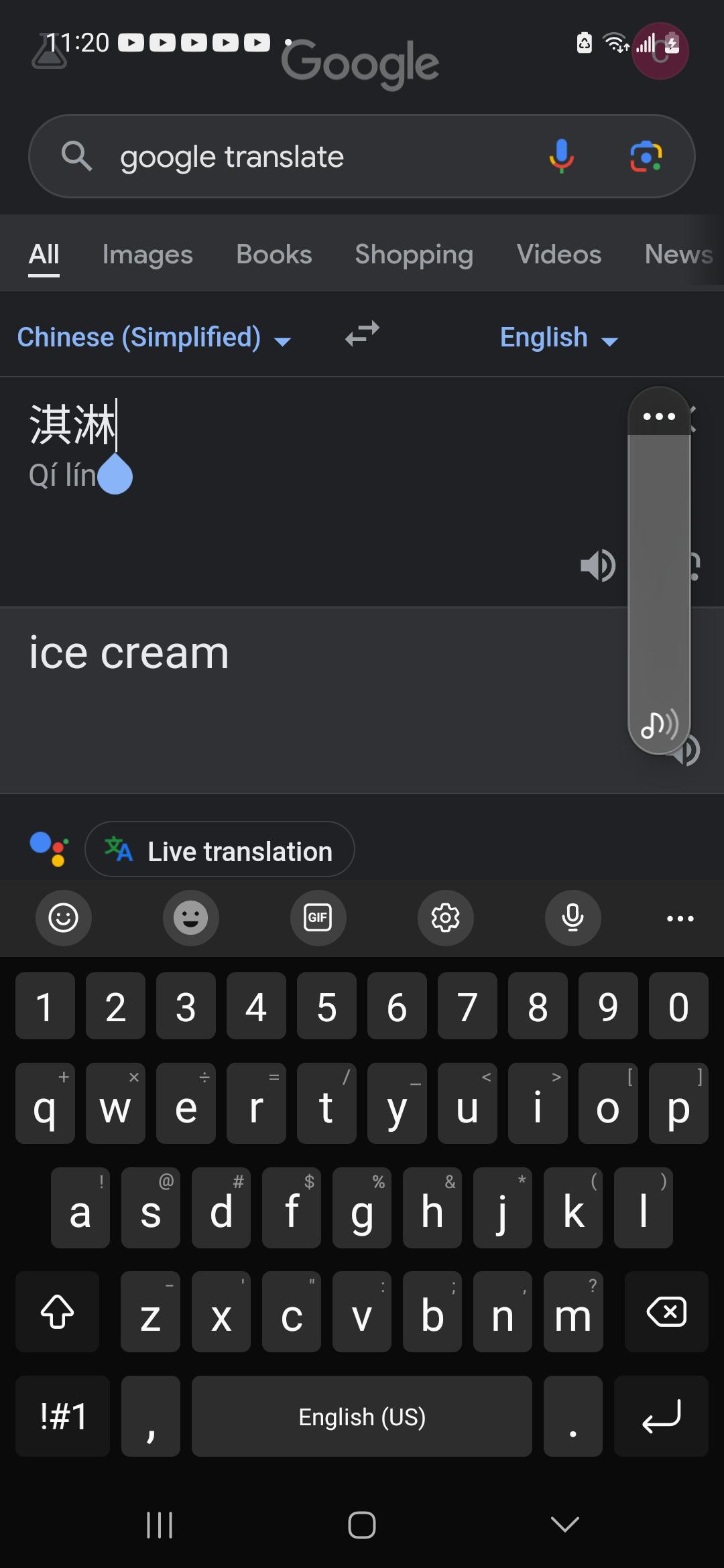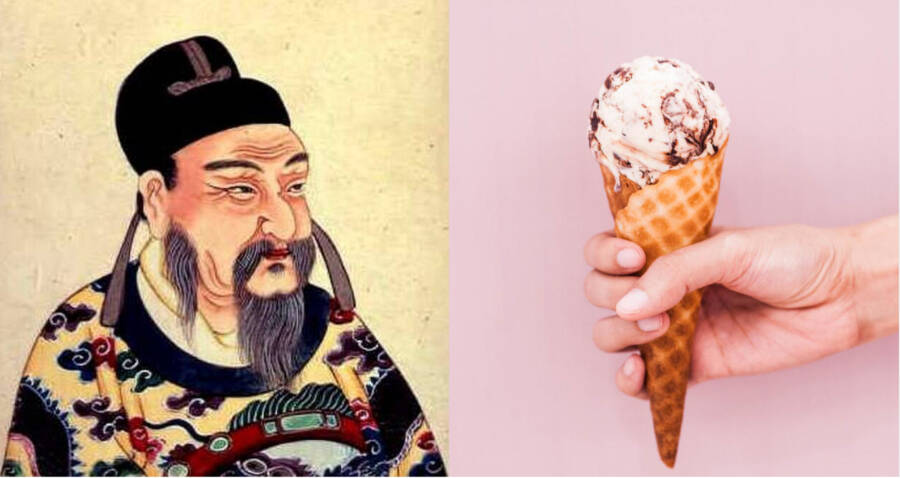Introduction

Ice cream is a beloved dessert enjoyed by people all over the world. It is a frozen treat that comes in various flavors and textures, bringing delight to both young and old. As ice cream becomes more popular in different cultures, the need for accurate translation arises. This is especially true when it comes to translating ice cream into Chinese, a language spoken by millions. Understanding the translation of ice cream in Chinese not only helps with language comprehension but also gives insight into the cultural context and variations of this delightful dessert. In this blog post, we will explore the basic translation of ice cream in Chinese, its cultural context, regional variations, and the challenges in accurately translating it.
History And Popularity Of Ice Cream
Ice cream has a rich history and has been enjoyed by people for centuries. The origins of ice cream can be traced back to ancient China, where a mixture of rice and milk was frozen in snow to create a chilled treat. As time went on, ice cream evolved and spread to other parts of the world, becoming a popular dessert in countries like Italy and France. Today, ice cream is enjoyed globally and has become a staple in many cultures, including China. Its popularity continues to grow as new flavors and variations are introduced to satisfy the sweet tooth of ice cream lovers worldwide.
Importance Of Translating Ice Cream Into Chinese Language
Translating ice cream into Chinese is of great importance due to the widespread popularity and consumption of this frozen treat in China. It allows for effective communication and understanding between cultures, especially in the context of global trade and tourism. Accurate translation helps Chinese consumers navigate menus, labels, and ingredient lists when purchasing ice cream products. It also allows international ice cream brands to effectively market their products to Chinese consumers by using language that resonates with them. Translating ice cream into Chinese enhances cultural exchange and facilitates the appreciation and enjoyment of this beloved dessert in China.
Basic Translation

In terms of basic translation, the literal translation of ice cream in Chinese is 冰激凌 (bīng jī líng). This term is commonly used in Mainland China to refer to this frozen dessert. However, there are also other terms used in different Chinese-speaking regions. In Taiwan, the term 冰淇淋 (bīng qí lín) or 甜筒 (tián tǒng) is used, while in Hong Kong, 雪糕 (xuě gāo) is the preferred term. These different translations reflect the regional variations and cultural nuances in referring to ice cream in Chinese.
Literal Translation Of Ice Cream In Chinese
The literal translation of ice cream in Chinese is 冰激凌 (bīng jī líng). This term is commonly used in Mainland China to refer to this frozen dessert. It directly translates to “ice exciting and cold” in English. However, it is important to note that this literal translation may not fully capture the cultural and culinary nuances associated with ice cream. Different regions in China may have their own variations and terms for ice cream, reflecting the diversity of Chinese cuisine and language.
Commonly Used Chinese Term For Ice Cream
The commonly used Chinese term for ice cream is 冰淇淋 (bīng qí lín). This term is primarily used in Taiwan to refer to the frozen dessert. It directly translates to “frozen dairy product” in English, emphasizing its creamy and cold nature. 冰淇淋 has gained popularity and recognition in other Chinese-speaking regions as well, including Hong Kong and overseas Chinese communities. While 冰淇淋 is the most widely recognized term, it is important to note that regional variations in terminology and flavors exist throughout China.
Cultural Context

In Chinese culture, ice cream has become a popular dessert enjoyed by people of all ages. The Chinese have their own variations and flavors of ice cream that are unique to their culinary traditions. Some popular Chinese ice cream flavors include red bean, green tea, and lychee. Additionally, traditional Chinese desserts like Tanghulu (candied fruit on a stick) and Shuangpi Nai (double-skin milk) resemble the texture and taste of ice cream. These cultural influences have shaped the preferences and offerings of ice cream in different Chinese-speaking regions, adding a distinct local flair to this frozen treat.
Chinese Ice Cream Variations And Flavors
Chinese ice cream offers a wide range of unique flavors and variations that reflect the country’s culinary traditions. Some popular Chinese ice cream flavors include red bean, green tea, and lychee. These flavors incorporate ingredients that are commonly found in Chinese desserts and beverages, giving them a distinct local flair. Additionally, Chinese ice cream often incorporates traditional Chinese flavors like black sesame, taro, and matcha. These variations provide a delightful fusion of traditional Chinese flavors with the creamy texture of ice cream, appealing to both locals and visitors alike.
Traditional Chinese Desserts Resembling Ice Cream
Chinese cuisine offers a variety of delectable desserts that bear resemblance to ice cream in terms of texture and flavor. One such dessert is called “xue hua bing,” which translates to “snowflake ice.” It is made by shaving blocks of ice into thin, delicate flakes and then topped with a range of sweet condiments like fresh fruit, syrups, and sweet beans. Another traditional dessert, known as “tang yuan,” consists of glutinous rice balls served in a sweet soup. These soft, chewy balls can be filled with various sweet fillings, creating a delightful texture that is similar to ice cream. These traditional Chinese desserts provide a unique and refreshing alternative to conventional ice cream options.
Regional Variations

In different Chinese-speaking regions, there are variations in ice cream terminology and preferences. In mainland China, the most commonly used term for ice cream is “冰激凌” (bīng jī líng). In Taiwan, “冰淇淋” (bīng qí lín) or “甜筒” (tián tǒng) are more commonly used. In Hong Kong, the term “雪糕” (syut1 gou1) is popular. These regional variations reflect the linguistic and cultural diversity within the Chinese-speaking world, highlighting the importance of considering local preferences and terminologies when translating the concept of ice cream.
Ice Cream Terminology In Different Chinese-speaking Regions
In different Chinese-speaking regions, there are variations in ice cream terminology and preferences. In mainland China, the most commonly used term for ice cream is “冰激凌” (bīng jī líng). In Taiwan, “冰淇淋” (bīng qí lín) or “甜筒” (tián tǒng) are more commonly used. In Hong Kong, the term “雪糕” (syut1 gou1) is popular. These regional variations reflect the linguistic and cultural diversity within the Chinese-speaking world, highlighting the importance of considering local preferences and terminologies when translating the concept of ice cream. [19][20]
Popular Ice Cream Brands In China
Some of the popular ice cream brands in China include:
- Chicecream (钟薛高 zhōngxuēgāo): Known as the “Hermès of ice cream,” Chicecream is a high-end brand that offers luxury ice cream flavors with unique combinations.
- Nanjing Impressions (南京大排档): This brand specializes in traditional Nanjing-style ice cream, made with ingredients like osmanthus, rose, and sesame.
- Hong Tang (红糖): Hong Tang offers a range of artisanal ice cream flavors inspired by Chinese desserts, such as black sesame and red bean.
- Tao Kae Noi (泰国德凯乌雷): This Thai brand is popular in China for its innovative flavors like seaweed and coconut ice cream.
These brands cater to different preferences and offer a diverse range of flavors, attracting ice cream enthusiasts across China. [22]
Challenges In Translation

Translating ice cream into Chinese can present certain challenges due to linguistic and cultural differences. One of the main challenges is finding the correct terminology that accurately conveys the concept of ice cream in Chinese. Additionally, cultural contexts and culinary traditions play a significant role in the translation process, as flavors and ingredients specific to Chinese cuisine may not have direct equivalents in English. Phonetic and semantic considerations must also be taken into account to ensure accurate and meaningful translations. Overcoming these challenges is essential to foster cultural understanding and ensure the accurate representation of ice cream in the Chinese language.
Linguistic And Cultural Difficulties In Translating Ice Cream
Translating ice cream into Chinese can present certain linguistic and cultural challenges. Linguistically, finding the accurate terminology for ice cream in Chinese can be tricky due to differences in phonetics and semantics between the two languages. Cultural contexts also play a significant role, as flavors and ingredients specific to Chinese cuisine may not have direct equivalents in English. Additionally, Chinese culinary traditions and preferences may impact the translation, as certain ice cream flavors or styles may not be familiar or popular in Chinese culture. Overcoming these linguistic and cultural difficulties is crucial to ensure accurate and meaningful translations of ice cream in Chinese.
Phonetic And Semantic Considerations
When translating ice cream into Chinese, phonetic and semantic considerations must be taken into account. Phonetically, finding the accurate pronunciation can be challenging due to the differences in phonetics between English and Chinese. It is important to ensure that the translation accurately represents the sounds of “ice cream” in Chinese. Semantically, it is crucial to choose the appropriate Chinese characters that reflect the meaning and concept of ice cream. The translation should convey the idea of a frozen, sweet dessert made from dairy or other ingredients.
Conclusion

In conclusion, translating ice cream into Chinese requires careful consideration of phonetic and semantic elements. The accurate translation of “ice cream” in Chinese is 冰淇淋 (bīngqílín). This translation reflects both the phonetics and the meaning of a frozen dessert made from dairy or other ingredients. Understanding the cultural context of ice cream in China, including regional variations and traditional desserts, is essential for accurate translation and cultural understanding. By accurately translating ice cream, we can bridge cultural gaps and promote better understanding between English and Chinese speakers.
Importance Of Accurate Translation For Cultural Understanding
Accurate translation plays a crucial role in promoting cultural understanding between different languages and societies. When it comes to specific terms like ice cream, accurately translating it into Chinese allows for better communication and appreciation of cultural nuances. It helps bridge the gap between English-speaking and Chinese-speaking individuals, enhancing cultural exchanges and fostering a greater understanding of each other’s traditions and preferences. By ensuring accurate translations, we can facilitate meaningful interactions, encourage cultural appreciation, and strengthen global connections.
Summary Of Chinese Translations For Ice Cream
Ice cream is translated into Chinese as 冰激凌 (bīng jī líng) in Mainland China, 冰淇淋/甜筒 (bīng qí lín/tián tǒng) in Taiwan, and 雪糕 (xuě gāo) in Hong Kong. These translations reflect the regional differences in language and cultural influences. While 冰激凌 is the most commonly used term in Mainland China, Taiwan and Hong Kong have their own variations. Understanding these translations is essential for effective communication and cultural appreciation when talking about ice cream in the Chinese language.
FAQ – Ice Cream in Chinese
- What is ice cream called in Chinese?
Ice cream is called “冰淇淋” (bīngqílín) in Chinese. It is a popular frozen dessert enjoyed by people of all ages across China. - How do you pronounce “冰淇淋”?
The pronunciation of ice cream in Chinese, “冰淇淋” (bīngqílín), is pronounced as “bing-chee-lin”. - Is ice cream popular in China?
Yes, ice cream is very popular in China. It is a beloved treat and widely available in various flavors and forms. Whether it’s a traditional cone, a cup, or even in the form of a sundae, you can find ice cream options in many shops and eateries across the country. - What are the popular flavors of ice cream in China?
While classic flavors like vanilla and chocolate are popular, Chinese ice cream lovers also enjoy unique flavors like green tea, red bean, mango, taro, black sesame, and lychee. These flavors often reflect traditional Chinese tastes and ingredients. - Are there any famous ice cream brands in China?
Yes, there are several popular ice cream brands in China, some of which have gained recognition internationally. Brands like “壹来” (Yi Lai), “英雄” (Ying Xiong), “圣诞奇迹” (Shèngdàn Qíjì), and “双双” (Shuāng Shuāng) are some of the well-known Chinese ice cream brands that offer a wide range of flavors and varieties. - Can I find ice cream in street food stalls?
Yes, street food stalls in China often sell ice cream. You can find vendors selling ice cream on sticks or inside soft buns, offering a delightful treat on the go. These street vendors often have unique and creative flavors to choose from. - Are there any dairy-free or vegan options available?
Yes, with the increasing demand for dairy-free and vegan alternatives, many Chinese ice cream brands now offer non-dairy and vegan options. These alternatives use ingredients like soy milk, coconut milk, or almond milk to create delicious frozen treats suitable for those with dietary restrictions. - Are there any local desserts similar to ice cream in China?
Yes, there are several traditional Chinese frozen desserts that are similar to ice cream. For example, “雪糕” (xuěgāo) is a frozen treat made from crushed ice with flavored syrup poured on top. “冰棍” (bīnggùn) is a popular ice lolly made from fruit juice or milk. These sweet treats provide a refreshing alternative to traditional ice cream.
In conclusion, ice cream, known as “冰淇淋” (bīngqílín) in Chinese, is a beloved treat in China. With a wide variety of flavors and forms, ice cream is enjoyed by people of all ages and is readily available throughout the country. Whether you prefer classic flavors or enjoy trying unique Chinese-inspired options, there is always a frozen delight waiting to be savored.

Soo Good Snack Bar is an upscale snack shop located at 1309 Hermosa Ave. in Hermosa Beach, CA. This family-owned business is the newest addition to the community of Hermosa, and our goal is to create a fun and inviting place where families can enjoy delicious snack foods that fit the beach lifestyle. Check us out today and help yourself to happiness.
